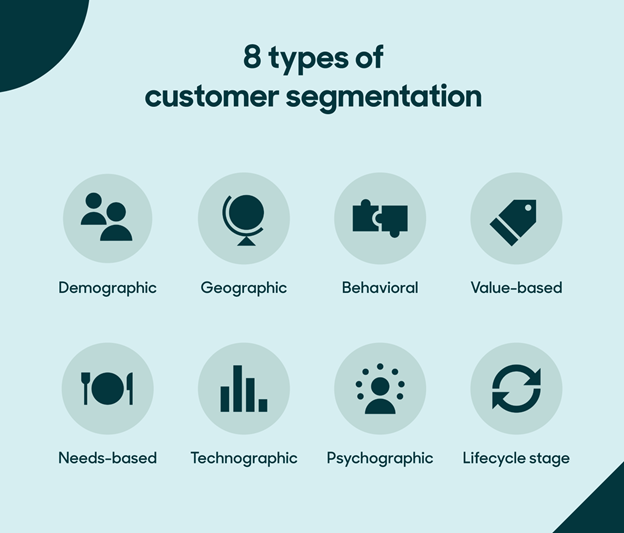A lot goes into creating great digital products. While some businesses may design and build user journeys based on intuition, seasoned UX designers know how important real-world testing and data is.
But while many of us know the importance of user feedback and data, not everyone has gotten a handle on how to actually integrate these insights into the user experience.
The best route to success? A proactive approach that involves collecting, analyzing, and acting on user feedback, coupled with regular updates and optimization efforts. But implementing a robust feedback structure can pose challenges, particularly without a cohesive strategy in place.
Let’s look at how to tap into user feedback and data to shape UX design for long-term success.
How to Collect User Data & Feedback
The process starts of course with gathering your data. You may be surprised to learn that sometimes the best UX takes both qualitative and quantitative data into account.
You can gather this information using several tactics (again, likely a combination of several will be your best bet):
- Surveys: Create surveys to collect structured feedback. Email is a great distribution channel, just make sure your email list is up to date to avoid hurting your sender reputation!
- Net promoter score (NPS): You can use email surveys to understand customer loyalty and satisfaction by measuring NPS.
- Interviews: Conduct one-on-one or group customer/user interviews to gather in-depth insights.
- Forms/widgets/popups: Integrate non-obtrusive interaction points throughout the journey where users can leave instant feedback.
- Social media listening: Monitor social media channels for unfiltered feedback and sentiment.
- Analytics: Tooling like Google Analytics to track user behavior on your site or app, because sometimes actions are a better indicator than words.
- Behavior: If you run an online tool, plug in a product analytics platform to gather information on usage and behavior to uncover friction points.
- Heatmaps: Utilize heat mapping tools to visualize where users click and spend the most time.
- User testing: Conduct usability tests with real people to understand their interactions and pain points.
- Reviews: Don’t forget to look at reviews both onsite and off (blogs, app stores, etc.) for insight into customer opinions!
- Customer support interactions: Your customer support team probably has more direct contact with your users/customers than anyone else. Analyze support tickets, chats, etc. for valuable feedback.
You will use your own custom blend of the above approaches to create a consistent feedback loop in your business. The idea is that users input feedback, you take action, and the cycle begins again.
During this process, it’s important to look out for research bias. This can happen subconsciously, without you even realizing it. Make sure to solicit feedback from multiple sources, identify your personal biases, and embrace diverse perspectives.
How to Shape UX With Data & Feedback
Now let’s get into the nuts and bolts of how this all works. What can you do to turn the information you’ve collected into UX initiatives?
Let’s take a look at the top tips for taking action on data and feedback.
Build Accurate Personas
Here, you want to understand your key user segments and the most common pain points for each. This will ensure you’re tackling the areas that will have the most impact, instead of chasing down edge cases where the return isn’t worth the work you’ll invest.
You’ll create these segments using personas, which are fictional representations of a target user group based on research and data.
A persona identifies not only who customers are, but also their goals and challenges, so you can design user interfaces and flows to meet their needs. For example, if one of your core persona represents a tech-savvy millennial who values efficiency, designers might prioritize mobile responsiveness and simple navigation.
Your personas might include the following information:
- Demographics (age, location, education level, occupation or industry, etc.)
- Goals and objectives when using your app or website
- Challenges and pain points
- Behavioral insights (devices, when they engage, how they engage, etc.)
- Motivations and values
- Technological proficiency
- Communication preferences
Identify Data Trends
Analyzing data trends allows businesses to identify patterns and preferences among users. Whether it’s a preference for certain features or recurring pain points, recognizing these trends informs strategic decision-making in UX design.
When looking for trends, find points of friction. Look for common pain points that users encounter during their interactions, such as difficulties in completing tasks or confusing navigation.
Let’s say, for example, many users abandon their carts during the checkout process at the payment stage. You investigate and learn that users encounter difficulties when inputting payment information, resulting in frustration and abandonment. To address this trend, the UX team should implement a solution to reduce this friction in hopes it will also reduce the cart abandonment rate.
Conduct A/B Testing
Run A/B tests to compare different design variations and determine which one performs better in terms of user engagement and conversion rates. Experiment with changes to layout, color schemes, calls-to-action, and other design elements.
For example, if you’re unsure whether a button or a simple link will drive more conversions, an A/B test can help you gather data and make an informed decision based on real-world user preferences. Remember to have a hypothesis for each A/B test, and record the results. You’ll also want to ensure you only A/B test one element at a time.
Test MVPs
On your way to creating a digital product, app, or feature you’ll likely arrive at what’s known as an MVP: minimum viable product. This is almost like a prototype—a preliminary version that can demonstrate functionality and key elements of the user experience, but isn’t ready for the public yet.
At this point, you can conduct user testing to evaluate the quality of interactions before investing in full-scale development and design. Use this feedback to refine and iterate on your design, addressing any usability issues early in the creation process.
Integrate Insights via Agile Development
In an agile environment, UX researchers and designers will often have to work within development sprints to make the desired changes to a product—whether it’s after the fact or during the initial build out.
Sprints are periods of time when dev teams work together to solve specific problems. To get the problem they want to solve solved, UX teams need to work with the leader of the sprint—usually called the scrum master—to figure out how to present the problem and the data supporting the problem to create a user story. Then, they may even stay engaged throughout the sprint to participate in planning, reviews, and retrospectives to make sure the UX upgrade is made according to their expectations.
Measure and Iterate
Remember that feedback loop we talked about? A loop is never-ending—much like this process of iterative, data-informed UX design.
What does that look like? When you make a change, check the data to see the results.
Did it work? Why or why not? Learn from each iteration and apply those learnings to the next phase, or the next initiative.
Move Forward With Your Feedback-Informed UX
Creating great UX is anchored in a relationship with data and feedback. It should be an iterative process of gathering insights, shaping UX, and implementing changes based on feedback.
From the initial stages of data collection to the iterative testing process, every step is crucial for nurturing user-centric experiences that resonate with audiences. By leveraging diverse data sources and embracing cross-departmental collaboration, businesses can unveil valuable trends and patterns that inform strategic decision-making in UX design.
- How to Use Data & Feedback to Shape User Experiences - May 13, 2024
- How to Enhance UX by Combining Automation and Personal Touchpoints - November 13, 2023
![]() Give feedback about this article
Give feedback about this article
Were sorry to hear about that, give us a chance to improve.








